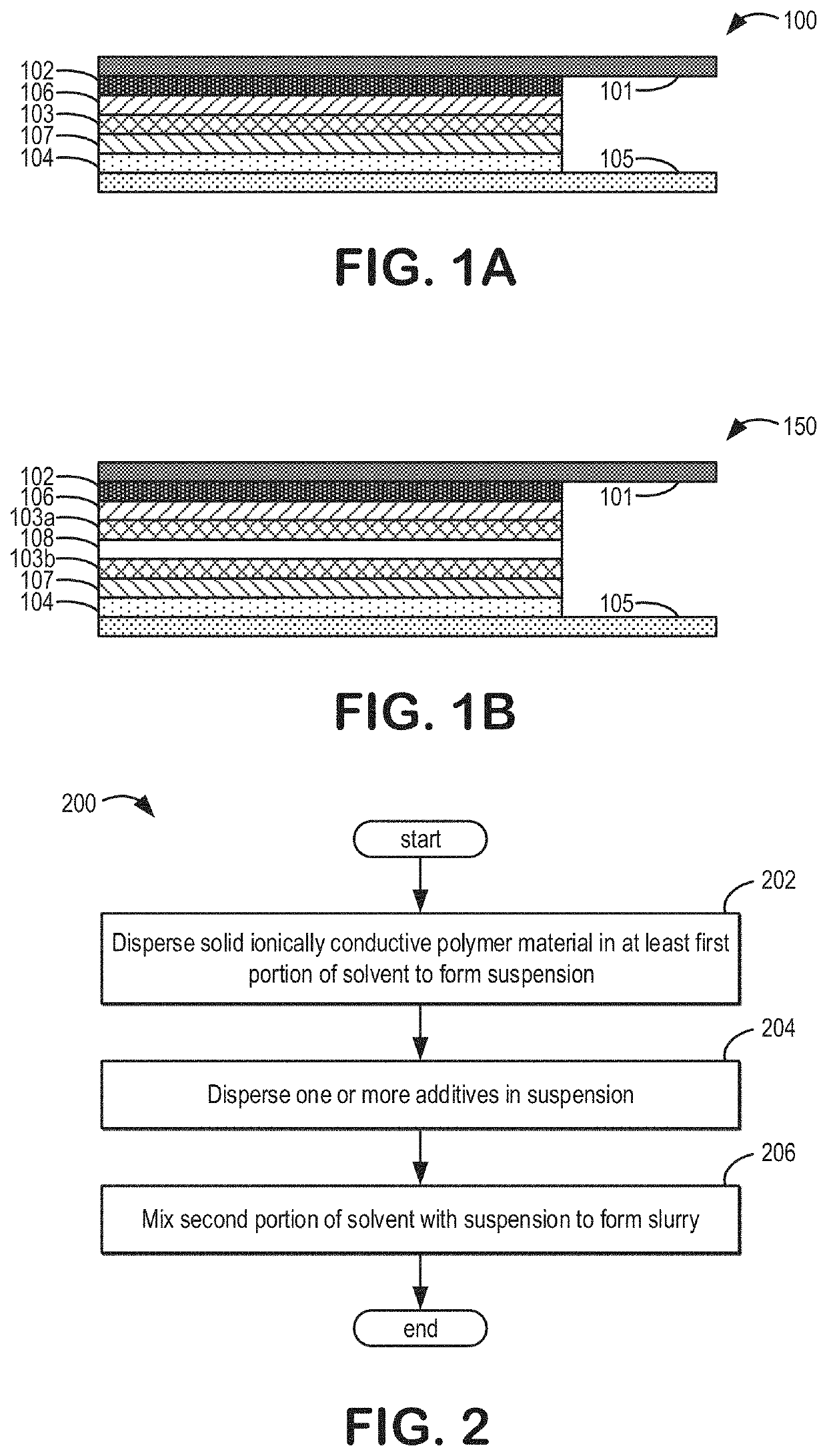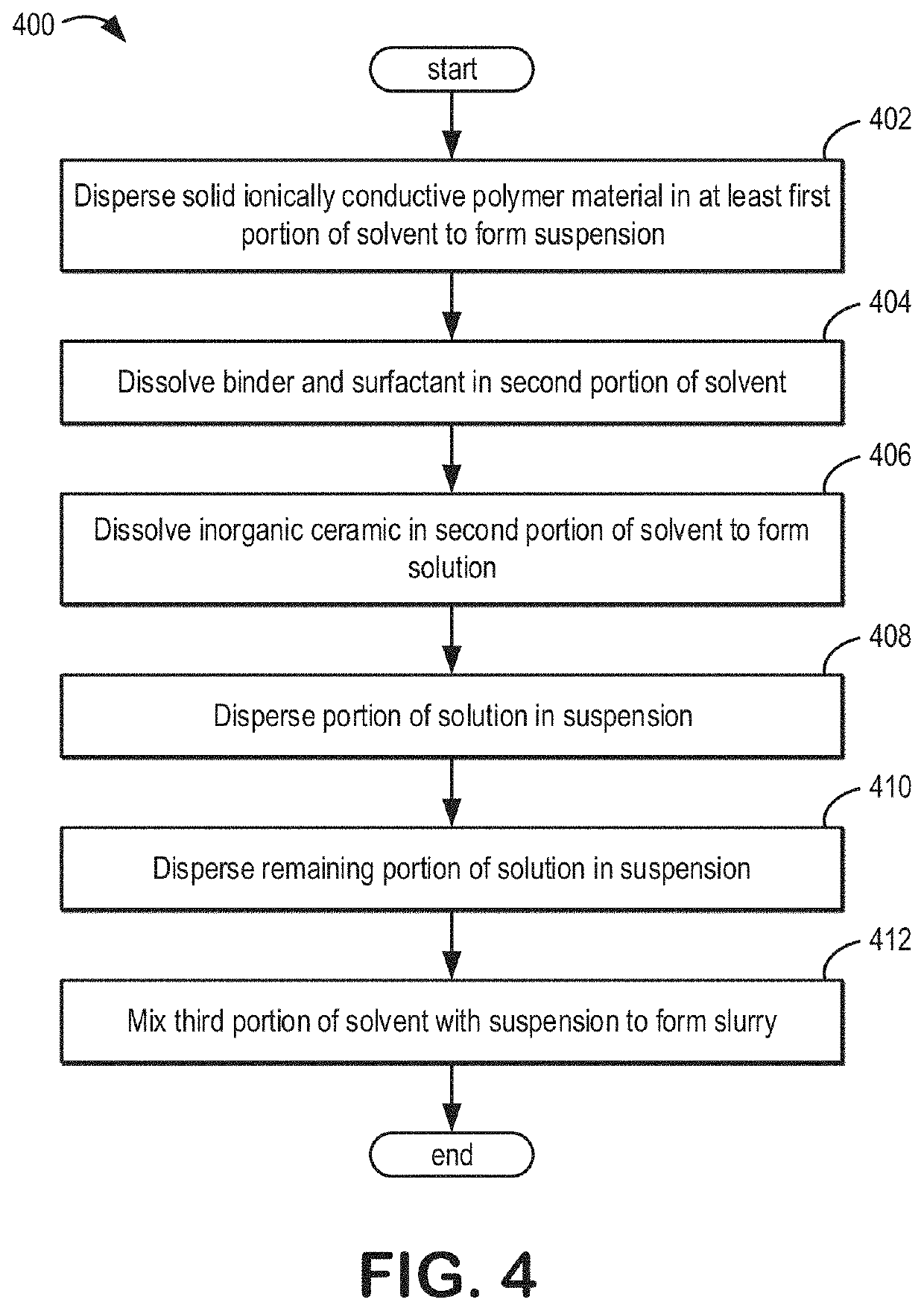Systems and methods for a composite solid-state battery cell with an ionically conductive polymer electrolyte
a solid-state battery cell and polymer electrolyte technology, applied in the field of solid-state battery cell systems and methods, can solve the problems of reducing the resistance of the electrolyte/separator layer, reducing the capacity, and poor performance, so as to prevent the occurrence of shorting, reduce the resistance of the electrode, and reduce the resistance. the effect of resistan
- Summary
- Abstract
- Description
- Claims
- Application Information
AI Technical Summary
Benefits of technology
Problems solved by technology
Method used
Image
Examples
Embodiment Construction
[0033]The following description relates to systems and methods for a solid-state battery cell including an ionically conductive polymer material as an electrolyte. Specifically, the ionically conductive polymer material may be a solid ionically conducting powder, such as the solid, ionically conductive polymer material U.S. Patent Application Publication No. 2017 / 0018781, International Patent Publication No. 2016 / 196873, and U.S. Patent Application Publication No. 2017 / 0005356 the contents of which are incorporated herein by reference, and such as the solid ionically conducting powder produced by Ionic Materials Inc. of Woburn, Mass. The solid ionically conductive polymer material may be synthesized from: a polymer, a dopant and an ionic compound. The base polymer may be semicrystalline or fully crystalline. Typical materials that may be used for the base polymer include liquid crystal polymers and polyphenylene sulfide, also known as PPS, or a semi-crystalline polymer with a crysta...
PUM
| Property | Measurement | Unit |
|---|---|---|
| ionic conductivity | aaaaa | aaaaa |
| d50 particle size | aaaaa | aaaaa |
| d50 particle size | aaaaa | aaaaa |
Abstract
Description
Claims
Application Information
 Login to View More
Login to View More - R&D
- Intellectual Property
- Life Sciences
- Materials
- Tech Scout
- Unparalleled Data Quality
- Higher Quality Content
- 60% Fewer Hallucinations
Browse by: Latest US Patents, China's latest patents, Technical Efficacy Thesaurus, Application Domain, Technology Topic, Popular Technical Reports.
© 2025 PatSnap. All rights reserved.Legal|Privacy policy|Modern Slavery Act Transparency Statement|Sitemap|About US| Contact US: help@patsnap.com



